Switzerland is one hell of a beautiful country - picture-postcard beautiful in ever so many ways. But after focusing wolf protection for decades to restore richer biodiversity - this beautiful country has become hell for wolves. Last year alone - over one hundred of them (including pups) were slaughtered for no good reason. Switzerland’s wolf population was cut down by a whopping third - simply because fearmongering continues to work like a charm.
We know that apex predators kill - that is their job. We know that they primarily go for wild prey. We also know that many farmers don’t take coexistence measures seriously and directly expose their livestock to wolves by letting them roam free and unguarded on Alpine pastures. We also know that hunters kill the wolf’s prey in the thousands - essentially taking the wolf’s food for their own pleasure - thus sometimes forcing wolves to go for livestock.
Who’s killing the sheep?
This may come as a surprise by anyone taken in by regular press coverage and the outrage posting by farming and hunting lobbies, the wolf is responsible for a mere 1.5 to 2.0 % of all sheep deaths! Makes you wonder, right?
What about those other 98%? There are on average about 350’000 sheep in Switzerland, reared for meat production. Between 200’000 and 250’000 sheep are slaughtered annually for that purpose - in 2024 exactly 226’471 sheep were slaughtered (see below chart from the official reporting database). In that same 2024, an incredible 58’107 sheep died of causes other than the slaughterhouse (“Verendungen” essentially translates to “slow and painful deaths”). So who is the major culprit? Simply put, it is farmers, propped up and protected by the farming industry/lobby and the Federal Food Safety and Veterinary Office of the Swiss government.

So what exactly happened to those over 58’000 sheep not killed by the slaughterhouse? About 1’000 of them annually are killed by wolves (and lynx). But around 57’000 died in 2024 because of diseases, parasites, extreme weather, accidents and unprofessional animal treatment. They fell prey to bad management, to an unacceptable lack of responsibility, to laissez-faire attitude and to downright animal cruelty. Most of those sheep died on untended meadows during transhumance months, and they died in barns because of horrible conditions.
What the public gets to hear and see
You can argue that the press at least reported on these numbers. And that’s only possible because, before 2020, data about sheep livestock dying because of neglect or disease or accidents, etc., didn’t even have to be reported. That data received barely any attention in past years - even if, even in 2021, the numbers of dead sheep because of those causes was already at 40’000. Long story short, annually over 200’000 sheep are slaughtered for meat production. Wolves are responsible for about 1’000 dead sheep, but over 56’000 die of other reasons.
The farming and hunting lobbies are strong in Switzerland and most other countries. Farming has long been associated with good land stewardship and food security. While there are many good and well-intentioned farmers, the ‘good land stewardship’ clearly cannot be applied to the vast majority that continues to degrade their lands with monocultures, overgrazing and over-fertilizing. And the ‘food security’ argument has long been disproved as nothing but a - unfortunately still effective - ploy to fool people and bully politicians.
And when it comes to those over 50’000 dead sheep, these lobbies (supported by cowing or willfully ignorant press) ensure that only images of dead and bloody sheep, torn by wolves, ever make it to the headlines.
Omerta of image silence
Omerta, the Mafia’s code of silence. You might think it a strong term to connect with the farming and hunting lobbies … well, I’d argue that it very much applies. These lobbies are organizations that go about their business by any means necessary. They threaten farmers, their pressure politicians, they enforce a code of silence when need be, and push and bully everyone to focus on the wolf and not the actual culprit.
When the press and NGOs reported on the above horrendous findings, what images do you think they were using in their articles? The wholesome pictures of sheep like the ones below from, left to right, the Tages-Anzeiger, Naturschutz.ch and Schweizer Bauer:
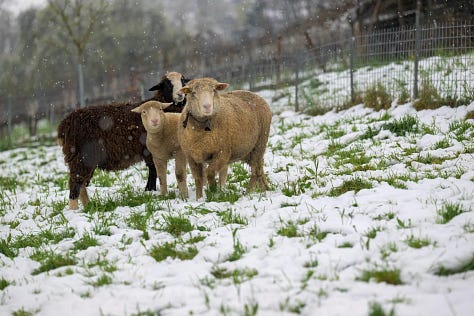
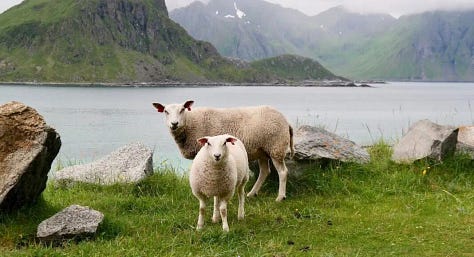
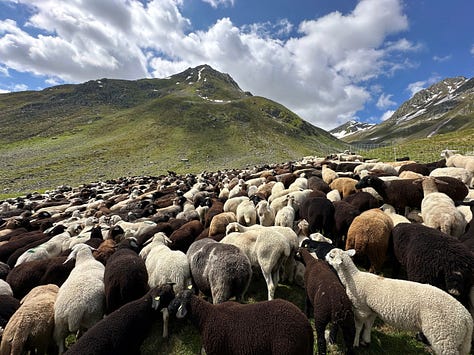
I don’t know whether the Federal Food Safety and Veterinary Office of the Swiss government is complicit or simply understaffed. In any case, they clearly do not do their job. They say that they “take the development with the sheep population and the increase in number of deaths very seriously” and that they liaise with cantonal counterparts to improve conditions for animal welfare. This sounds tremendously hollow in view of the rising numbers of obviously questionable deaths of sheep.
Sunlight is the best disinfectant
In trying to go deeper and find out more about those over 50’000 sheep deaths in Switzerland that receive barely any attention - compared with the constant outrage about the 1.5-2.0 % of sheep killed by wolves - I’ve found barely any images about the mistreatment and/or mismanagement of sheep in Switzerland. I have a feeling that the farming lobby ensures that it stays that way.
A good friend of mine once said that you should never trust any farmer with livestock barns that have no windows. Makes good sense - as the saying goes, “sunlight is the best disinfectant.” Too often no light is allowed anywhere near the places that produce all that the meat industries put on the shelves.
✋ Warning: When you search Google for images of harmed sheep, it’ll get horrific fast. The below link takes you to YouTube where I’ve used the search term “sheep mistreatment” - once you start searching, you will find. Beware, what you’ll find is hard to stomach. I understand entirely if you don’t want to see.
These are clips from around the world, if you watch them, they will rattle you. Unfortunately, I think we need to be rattled. And then we need to rattle others. These clips and images need to be held up to the mirror of the wholesome farming images we’re shown every day. These terrible realities can also be employed to combat the continued onslaught of fearmongering disinformation about the wolf.
The wolf is not the problem. Again, the wolf is not the problem. For anyone interested in restoring nature, the wolf is one of the key solutions and thus part of a healthy, long-term strategy to restore richly functioning biodiversity. The problem, the problem are people.
They way we treat animals says a great deal about who we are. The people in those videos are monstrous - and you can argue that several thousand years of treating nature as product has made them so. That doesn’t make it any better. The mistreatment, cruelty, mutilation, the kicking and punching, the utter disregard of another creature’s pain, agony, fear, terror - it’s beyond anything even remotely acceptable. It is abhorrent, it is horror, inflicted on the utterly innocent.
In a recent article of a Swiss paper they reported the following: “A farmer claimed that a dead sheep of his had been killed by a wolf. The ranger came to investigate, but quickly concluded that the animal had likely died of neglect. He informed the authorities. Inspectors visited the farm and found severely emaciated and maltreated sheep. The barn was in a filthy condition and one animal lay dead on the ground, with maggots that had already eaten through its eyes.”
You know what happened then? The farmer was prosecuted and found guilty. He had to pay a fine of 4’000 Swiss Francs - essentially a slap on the wrist. I think that any of those farmers who lose sheep through negligence of any kind should face prison time - and lose the right to keep livestock ever again.
If you enjoy the Rewilder Weekly …
… please consider supporting my work. Your paid subscription will help generate the funds needed to realize a unique rewilding book I’m working on. And, of course, that paid subscription also ensures that the Rewilder Weekly will always keep going for those who cannot afford to pay. A thousand thanks!
That’s it for this week’s edition! For more rewilding insights and stories from around the globe, use the #rewilding hashtag and follow people, organizations and groups that are as passionate about rewilding as you are. Let’s keep connecting and growing the movement!





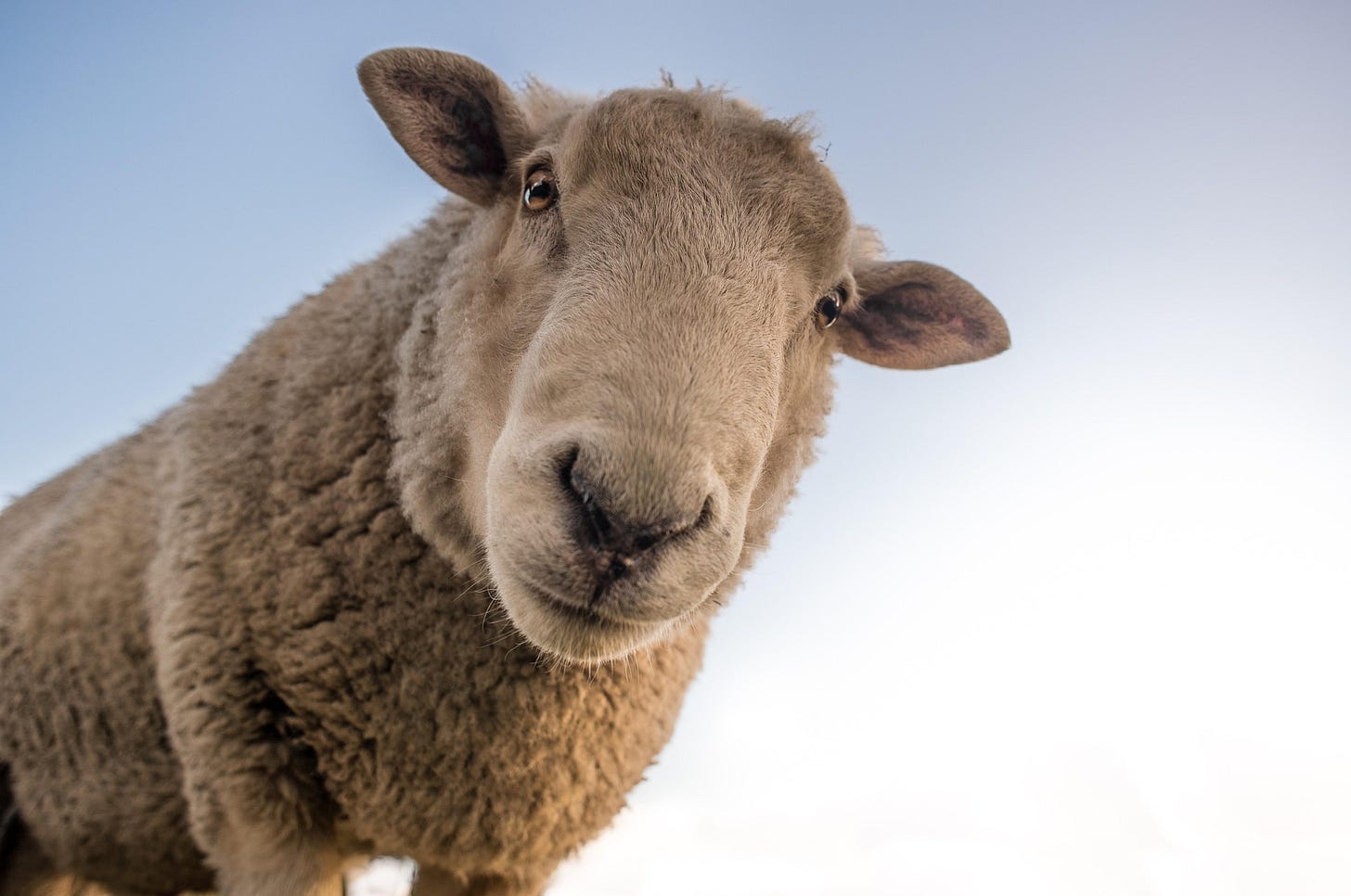

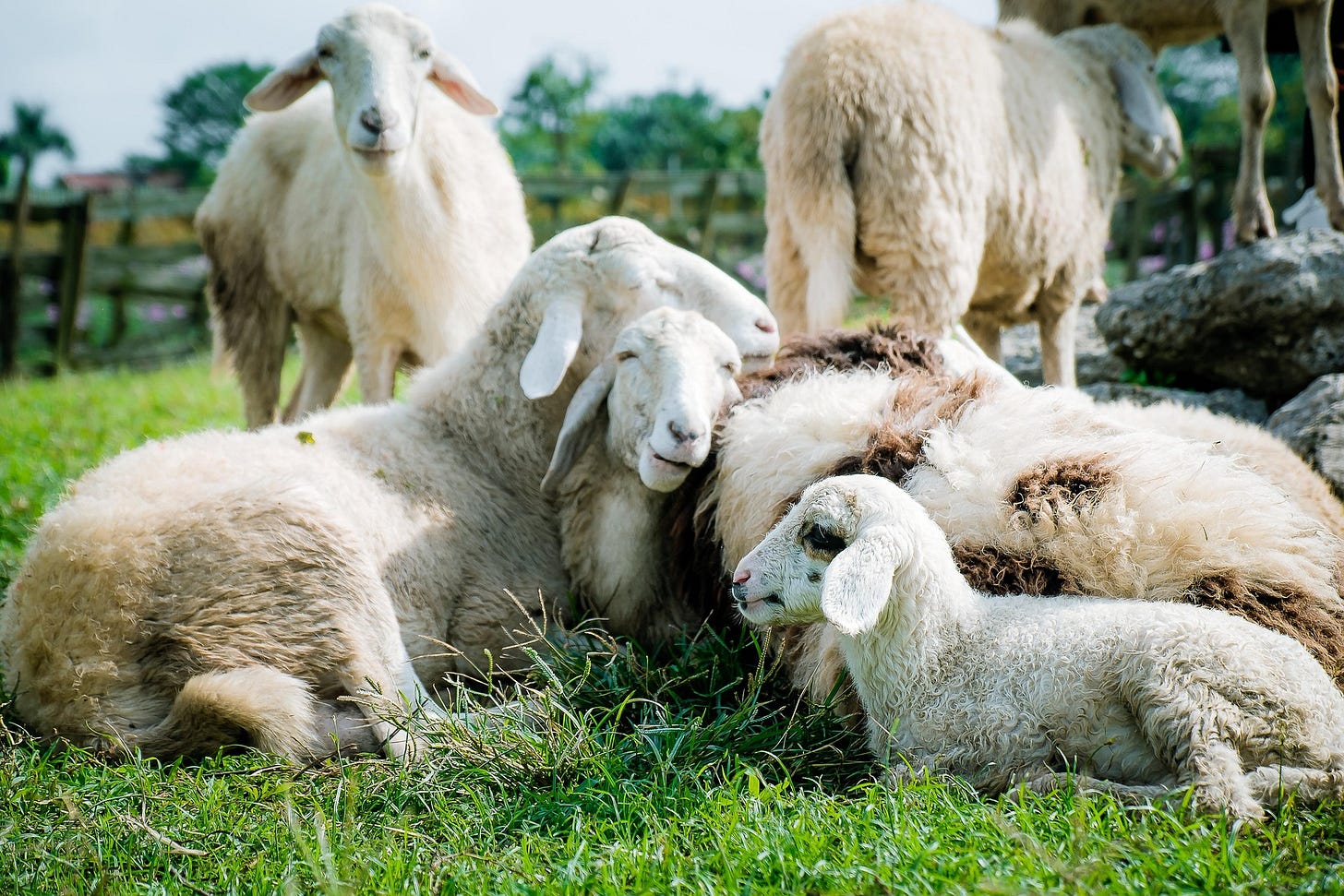
Inhumanity! Thank you for your concise clarification of the problems.